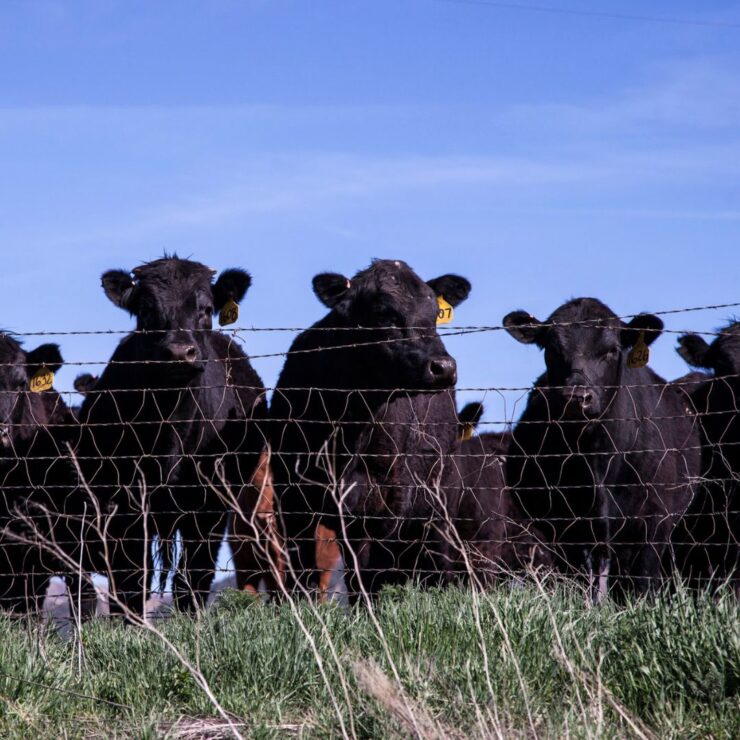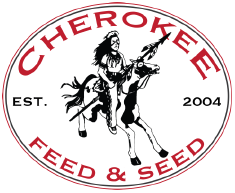 Livestock Vitamin and Mineral Deficiencies can lead to poor health and disease resistance in cattle and other financial losses. Jeffery O. Hall, with over 30 years of experience in animal health diagnostics, animal mineral testing, (and having not worked for a company selling vitamins or minerals,) has a unique outside perspective on effects and costs of deficiencies in cattle operations.
Livestock Vitamin and Mineral Deficiencies can lead to poor health and disease resistance in cattle and other financial losses. Jeffery O. Hall, with over 30 years of experience in animal health diagnostics, animal mineral testing, (and having not worked for a company selling vitamins or minerals,) has a unique outside perspective on effects and costs of deficiencies in cattle operations.
Most cattle operations work with slim profit margins, even during good years. Thus, anything that increases operation costs or decreases the market value of cattle can play a key role in profit vs. loss in operations.
Keeping your cattle supplied a high quality mineral is crucial to their overall well being and your profitability. Mineral deficiencies can lead to compromised immune systems and an increase in the number of cattle that do not breed back. Is your mineral program meeting your needs? Contact Cherokee Feed and Seed today to learn more about our selection of cattle mineral and avoid Livestock Vitamin and Mineral Deficiencies.
Vitamin and Mineral Evaluation:
During a 30-year period of evaluating vitamin and mineral status of cattle herds across the United States, it was common to find high percentages of herds/animals that were deficient in one or more trace minerals. Key trace minerals that are commonly identified as being deficient in beef cattle are copper, selenium, and zinc. These three trace minerals are critical for normal immune system function (ability to fight off disease) and normal reproductive performance. Vitamin A and vitamin E deficiencies are also frequently identified in certain years, most frequently associated with drought years and inadequate green forage intakes. In many of the deficiency cases identified, cattle were being supplemented, but inadequately. However, some deficient animals were not being supplemented and were often more severely deficient.
Factors:
Critical animal health and production factors can be adversely affected by vitamin or mineral deficiencies. Some of the most important factors are as follows:
- Poorer immune system function, which results in increased infectious diseases and poorer response to vaccinations
- Poorer reproductive performance,which results in increased open cows at pregnancy check, longer calving seasons, or increased numbers of cows that fail to carry a calf to term.
- Poorer growth and growth rates, resulting in smaller weaning weights.
Immune System Function:
The most commonly identified vitamin and mineral deficiencies are all important in cattle immune system function. These deficiencies can decrease an animal’s natural ability to fight off disease and/or build protection against disease. Thus, a much higher incidence of diseases, such as pneumonia, diarrhea, pink eye, foot rot, etc. are frequently observed in herds with deficiencies.
Another common observation is the occurrence of diseases even though the animals had been vaccinated for them. Animal owners frequently refer to these as vaccine failures when in reality it was a failure of the animal’s system to adequately respond to the vaccines. A secondary effect of increased disease due to poor immune system function is poorer growth in calves.
When animals become sick, one of the first things that happens is a decreased appetite. This occurs at the same time as the body is using a lot of energy in fighting to survive. The net result is a lack of gain or actual weight loss due to illness. But, as a general rule, for each animal that is visibly identified as sick and treated, there are likely 6-8 additional animals in the group that are also sick but not severe enough to be identified. These animals are also likely not eating as well and burning a lot of energy in fighting disease.
Increased Disease:
Increased disease in a group of cattle results in financial losses due to deaths, treatment costs, labor costs, and veterinary costs, as well as periods of decreased growth and weight gain. The numbers of cows that do not breed or calve result in significant economic losses in cattle operations. With deficiencies, younger cows are often more severely affected, but loss of these animals from the herd results in higher economic loss. This is likely due to slightly higher need for trace minerals in younger cows since they are still growing, causing them to become more deficient than mature cows.
Culling young open cows can cost hundreds of dollars per animal in overall ranch profits. Depending on the overall cattle economics, a cow generally becomes truly profitable after weaning and selling her fourth calf. Poorer growth, much of which is due to increased disease within the group, results in lighter weight animals for sale. Correction of even minor deficiencies in cow/calf operations frequently results in increased weaning weights of 20-25 pounds per calf.
Numerous cases where severe deficiencies were identified had increased weaning weights of greater than 60 pounds per calf after herd deficiencies were corrected. Stocker cattle also gain better, with some reports of 0.1 to 0.2 pounds per day of additional gain when supplemented adequately vs. inadequately. Part of the additional growth/gain is a secondary effect of decreased disease within the group, as sick animals do not eat well and burn a lot of energy just trying to survive through a sickness.
Vetrinarians and Nutritionists:
Working with one’s veterinarian and nutritionist is key to identify adequacy of supplementation programs for individual cattle operations. Certain geographic areas, soil types, and feed types can result in quite different supplementation requirements. Some dietary factors, such as excessive sulfur/sulfates or molybdenum, can interfere with an animal’s ability to absorb specific trace minerals, necessitating use of chelated, organic, or other mineral forms that can overcome the interferences.
It is important to understand that imbalance or excesses in some minerals can also interfere with the absorption of others. Thus, it is critical that a BALANCED mineral supplementation program be utilized for optimal effects. Evaluation of cattle for vitamin/mineral status can be performed on animals that die or in live animals. It is best to test liver samples for mineral status, as that is the primary storage site. Although serum mineral analysis can be performed, it sometimes does not provide an accurate representation of true status, especially for copper.
Even with moderate to severe systemic copper deficiency cattle will often still have normal serum copper content, resulting in inaccurate evaluation of true status. Vitamin A and E status can be tested on either serum or liver, but the liver must be very fresh, as these vitamins will start to break down as tissues break down.
Considerations:
How much is truly being ingested per cow per day? If a product is to be fed at an average of 4 ounces per head per day but is only being consumed at an average of 1-2 ounces per head per day, deficiencies can occur even on very well-formulated products.
What are the concentrations of the vitamins and minerals within the specific supplements being provided?
What are the chemical forms of the minerals being supplements? Different chemical forms of minerals can differ significantly in their ability to be absorbed into the animal’s system for use.
Are there any dietary imbalances or interfering factors that necessitate adjustment of formulations being provided to the cattle?
In total, vitamin/mineral deficiencies can cost cattle operations significantly in lost revenue potential per cow. These losses are in terms of actual financial losses and lost revenue potential, including reproductive failure losses, animal deaths, increased treatment labor, medicine costs, veterinary costs, and decreased weaning weights (less sale weight). Depending on economics and current cattle prices, mild deficiencies in a herd can cost $75–$125 per cow in lost revenue and increased direct costs. Severe deficiencies can cost a cattle operation over $190–$250 per cow in lost revenue and increased direct costs. The degree of economic losses is proportional to the severity of deficiencies within the cattle group.
